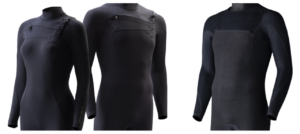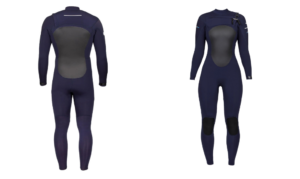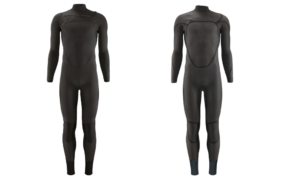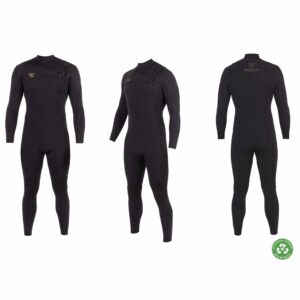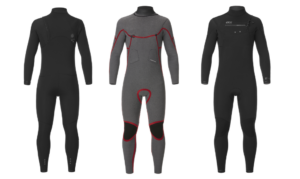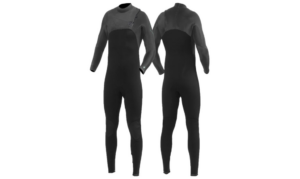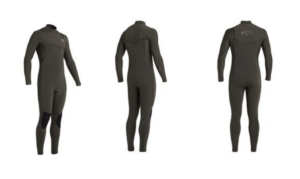Gone are the days when eco-friendly wetsuits needed to compromise on features just to be labelled “green”.
Now, surfers around the world can feel confident when plucking an environmentally friendly wetsuit off the rack knowing that it’s going to hold up, stay warm and look good too.
In saying that, there’s still a little way to go before all wetsuits can be considered a friend of Mother Earth.
Check out this comprehensive guide to learn what to look for in a sustainable wetsuit and read about a few of our favourite eco-friendly wetsuit models on the market!
What constitutes an eco-friendly wetsuit?
In short, wetsuits are considered eco-friendly when they’re made from sustainable materials that have a low impact on the environment.
The most environmentally friendly wetsuits are made from natural rubber such as limestone neoprene (otherwise known as Yamamoto neoprene) or Yulex®, which is a renewable and neoprene-free foam that’s harvested from hevea trees in Central America, South America and Sri Lanka.
Which materials are commonly used in eco-friendly wetsuits?
Because wetsuits are made up of more than just neoprene, there are a number of other components that go into the construction of eco-friendly wetsuits.
These components can be anything from the zipper to the dye and the glue that binds the stitching. What’s important to note is that for a wetsuit to be truly “green”, it must not only use environmentally-friendly neoprenes or natural rubber; it must also use non-harmful materials such as the following.
- Water-based lamination glues
Water-based glues emit zero volatile organic compounds (VOCs), making them much safer for both workers and the environment.
They also won’t give a new wetsuit that characteristic chemical smell. And because they’re just as strong as traditional glues, eco-friendly wetsuits will be just as durable as their counterparts.
- Dope dye
Dope dying is an environmentally friendly technology for dyeing wetsuits that saves energy and water (cutting carbon emissions by 20% and water consumption by up to 80%).
Wetsuits that are dope dyed boast a richer colour, are less likely to fade and are softer on the skin. Dope dye also eliminates the chance of rinsing water contaminating groundwater sources.
- Recycled linings (polyester and nylon)
The recycling of PET bottles to create boardshorts and vests is nothing new, but the use of PET bottles to create the inner and outer lining of wetsuits is a relatively novel innovation.
Now, most eco-friendly suits are knitted with recycled materials, which assists in reducing waste and material consumption. It also means we rely less on the dependence on petroleum-based products while decreasing plastic waste pollution that might have otherwise found its way into the ocean.
- Rubber neoprene alternatives
Both limestone neoprene (yamamoto neoprene) and Yulex® natural rubber are green alternatives to traditional rubber suits, with the former allowing us to avoid supporting the global oil industry and the latter being derived from trees with a significantly lower carbon footprint.
Is recycling wetsuits and reused neoprene a viable alternative?
When it comes to the manufacturing of wetsuits and other neoprene products, there are often lots of cuttings and panels that end up on the floor. And while larger companies take great pains when it comes to neoprene recycling, smaller brands might not have the capabilities to do so.
There’s also the question of the average surfer recycling wetsuits. At present, programs for returning old wetsuits to stores or companies are few and far between.
Rip Curl is one such brand that’s paving the way for other brands in this department by partnering with global recycling leader TerraCycle to repurpose recycled rubber for use in things like the soft fall matting used at playgrounds and outdoor gyms.
What are the benefits of using eco-friendly wetsuits?
There are many benefits to choosing an eco wetsuit over a wetsuit made from traditional neoprene, but for sure the biggest advantage is not having to pick between staying warm or contributing to the degradation of our natural world.
For eco-conscious surfers, this means that you can paddle and shred with peace of mind knowing that your wetsuit isn’t harming the very thing that you love. In addition, eco-friendly wetsuits often boast a number of other advantages such as being just as (if not more) comfortable, lightweight and long-lasting as traditional wetsuits.
Of course, we can’t avoid the fact that eco wetsuits are pricier compared conventional rubber wetsuits, but it’s forecasted that as demand grows and sustainable materials become more accessible, environmentally friendly wetsuits will also become more affordable.
The most eco-friendly wetsuits on the market right now
Now that you’re practically a guru when it comes to eco-friendly wetsuits, let’s look at the best environmentally friendly suits on the market.
Srface’s range of Yulex® wetsuits uses recycled nylon and recycled insulation to deliver excellent eco-friendly products that both look and perform great.
With a Yulex rubber fabric construction, recycled polyester outer skin and lining plus biodegradable packing, Finesterre’s Nieuwland 3e is eco-conscious in every sense of the word.
While pricier than other “green” wetsuits on the market, the fact the R1 combines Yulex® natural rubber certified by the Rainforest Alliance with increased-stretch lining means it ticks both the performance and sustainability boxes.
Wildsuits produces limestone neoprene suits exclusively across their entire range. They also use a next-gen inner fabric that’s incredibly flexible AND good for the planet, with approximately 45 plastic bottles used per suit.
As one of the first wetsuit brands to use synthetic foam derived from a mix of oyster shell powder, limestone and recycled tires, Picture is known for thinking outside the box. And in addition to using eco-friendly neoprene alternatives, their wetsuits are also imbued with water-based glues and recycled nylon during the production process.
Vissla is slowly incorporating more and more sustainable materials into its wetsuits. And their current High Seas II model utilises I-Foam limestone neoprene, dope dye fabric and solvent-free glues to produce a stretchy and warm wetsuit that’s also easy on the environment.
While Billabong is more known for its wetsuits infused with Nobel Prize-winning Graphene, this particular model is Billabong’s most eco-friendly yet. Made with CICLO® fibres that reduce plastic microfibre pollution and Yulex® natural rubber, it’s setting the standard for other big brands.
When it comes to finding an environmentally friendly wetsuit, there are many great options on the market. We’ve highlighted some of our favourites in this article, but be sure to do your own research to find the perfect suit for you.
One thing is for sure: as demand for sustainable products grows, the availability and variety of eco-friendly wetsuits will only continue to increase.
So don’t wait – get out there and surf green!

